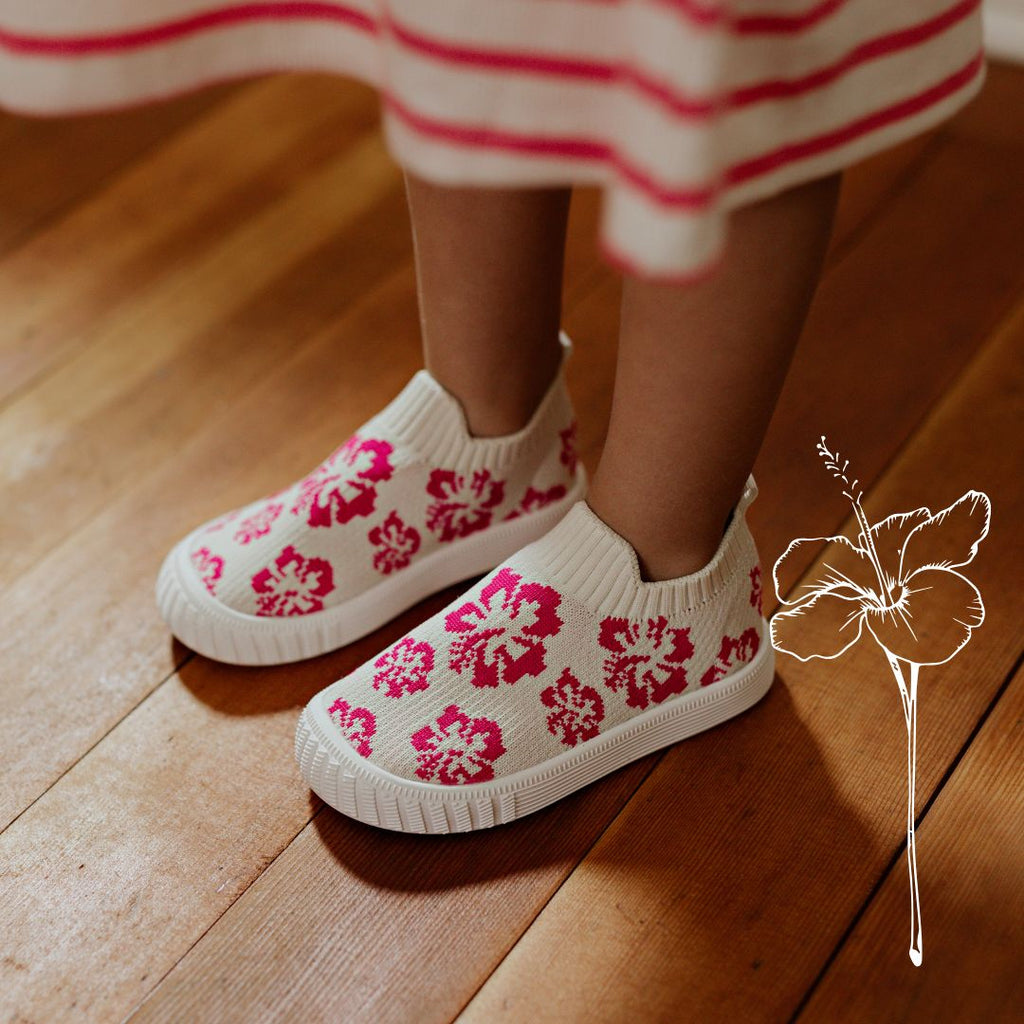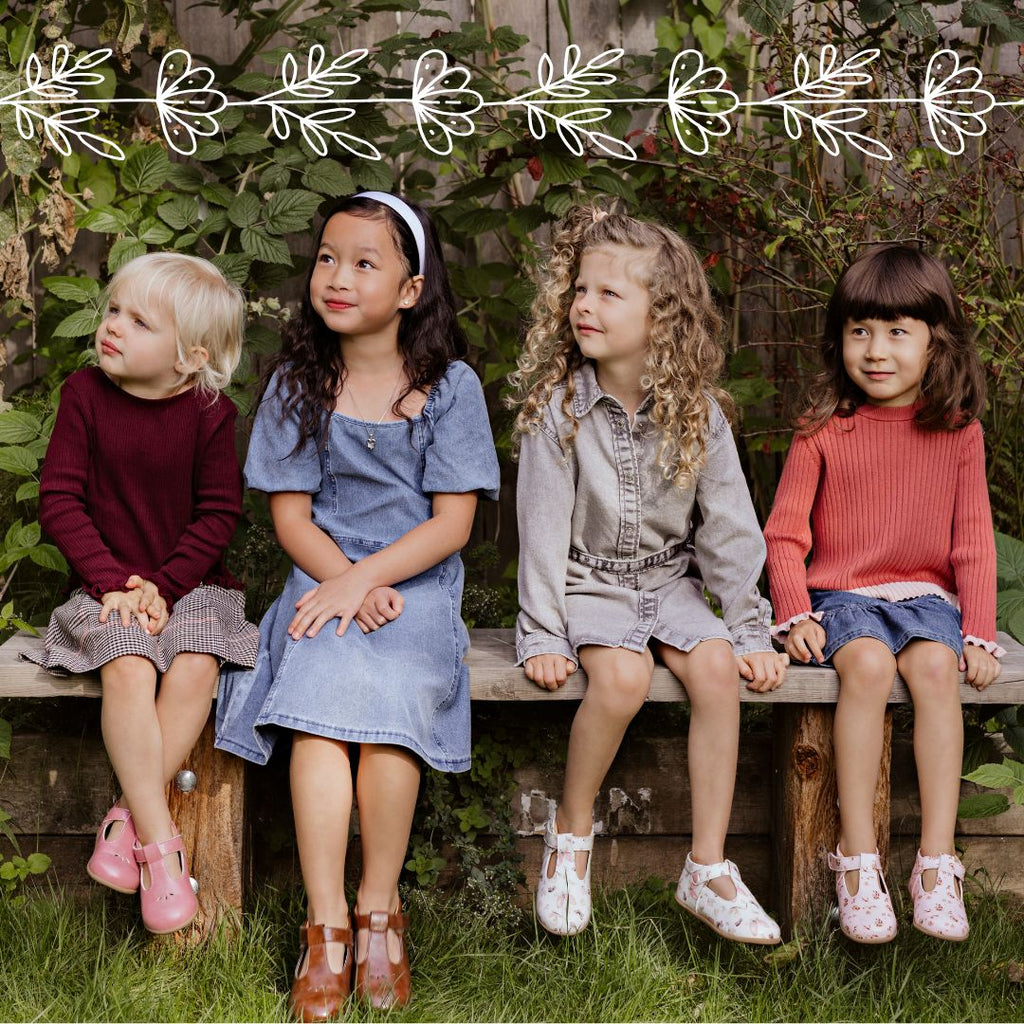No two children are the same – whether it involves their interests, dreams, growth pattern, or foot size. Even if two kids are of the same age, height, and weight, the width of one’s feet can be quite different from another’s. This is the reason why most footwear brands cater to varying shoe width sizes, including narrow, medium, wide, and extra wide. Or they mention the corresponding width for every shoe size in cm and inches. So, whether you are shopping for girls’ or boys’ shoes, it is important to measure both the length and width of each foot.
Continue reading to find out how to do that and what other factors to keep in mind.
Measuring the Width and Length of Your Child’s Feet
Ask your little one to stand up straight and put equal pressure on both their feet. Then measure each foot at its widest part with a measuring tape. This will help you to pick from different shoe width sizes later. Don’t forget that length is super important too. So, measure the distance from the tip of the longest toe to the back of the heel for each foot.
Another idea is to ask your child to stand on a blank white sheet of paper and trace the outlines of their feet. You can then measure the length and width of the same before shopping for shoes. Remember to add about 1.3 cm to the length of the foot before picking a shoe size. And buy a pair that is right for the bigger foot (yes, feet are usually of slightly different sizes in all kids).
What Else to Consider Before Buying Kids’ Shoes?
Whether you are looking for girls’ or boys’ shoes, it is not enough to get the width and length of the feet right. Here are a few other things you need to be mindful about:
- Opt for a Roomy Toe Box: A wide toe box will allow your munchkin to wiggle their toes comfortably and develop properly. A round or square toe box is usually ideal for the same. Pointy or tapered ones can squeeze those cute toes painfully, leaving no room for growth.
- Avoid Too Big or Too Small Sizes: Being accurate about shoe length and shoe width sizes is important as you don’t want your child to wince in pain while walking or lug around the shoes, scared to trip and fall. While extra small shoes can pinch their delicate skin, cause blisters, redness, and bruises, extra big ones can lead to accidents. Get a pair that fits snugly but don’t wait for your child’s feet to grow into them.
- Choose Lightweight Shoes: Heavy shoes can impede your munchkin’s natural movement, gait, and posture. They won’t be able to run around easily or play without pain. So, go for something lightweight yet robust.
- Make Sure the Shoes are Flexible: Try to bend the shoes, and if they fold almost halfway, they are flexible enough. Rigid shoes can interfere with your kid’s podiatric development, cause discomfort, and fail to support natural movement.
- Pick Shoes with Safe Outer Soles: Both girls’ and boys’ shoes should ideally come with durable soles that offer adequate traction on all surfaces, especially wet or extra smooth ones. So, make sure they have grooves and a decent grip. This way, your little one won’t slip, fall, and injure themselves.
- Go for Firm Backs: The pair you pick must offer your child’s ankles and heels ample support. This means that the back of its heels shouldn’t be too soft or hard. So, how to test the right amount of firmness? Just pinch the back of the heel, and if it collapses entirely, it is extra soft or flimsy. If the back doesn’t budge at all, it is extra hard or tough. So, try and zero in on shoes where the backs of the heels give in slightly but don’t lose form.
- Settle for Premium Materials: Leather, canvas, suede, and knit are the most popular materials when it comes to kids’ shoes. They are breathable, cozy, and gentle on the skin when you pick high-quality options. Moreover, your child’s feet won’t smell or encourage bacterial infections this way.
- Consider Shoes Featuring Closures: Buying adjustable shoes can help you save money in the long run, as your child’s feet are bound to change gradually. Pairs that feature buttons, laces, or Velcro straps can also ensure extra safety by perfecting the fit. In case of Velcro or buttons, your munchkin will also learn how to put on and take off the shoes easily and on their own.
- Let Them Try the Shoes Later in the Day: Feet in children tend to swell after a few hours of activity. So, avoid asking them to try out new shoes in the morning. Late afternoon or evening is more apt for try-outs.
- Consider the Season: The type of shoes you buy for your little one depends on the season too. For instance, during summer, open-toed styles, simple slip-ons, and sandals are ideal as they allow easy air circulation. When the temperature dips, boots, sneakers, and shoes with thick or warm linings can feel more comfy and supportive. While rubber shoes aren’t breathable, during the rainy months, they can protect those tiny tootsies against dirty water and mud. Kids can wear these for a few hours.
Shop for Girls’ or Boys’ Shoes in an Informed Way
By now, you have a fair idea about how to get shoe length and shoe width sizes right when it comes to footwear shopping for kids. You also know what other things to keep in mind before picking a pair, such as weight, toe box size, flexibility, sole safety, closures, materials, and even seasons. While shoes for children come in a wide array of exciting designs and colors, keeping this guide handy can help you choose something that is aesthetic, functional, and comfortable too.
To get started, you can explore the variety of boots, T-straps, sneakers, and slip-ons from Jack & Lily. If you still need more advice or cannot make up your mind about a pair, feel free to contact the professionals here.


